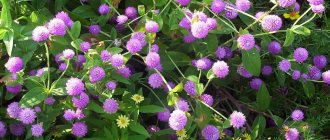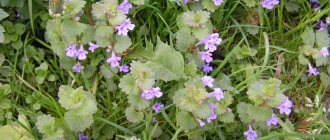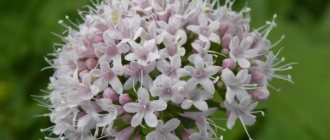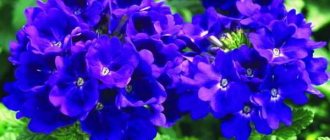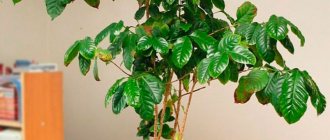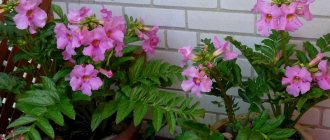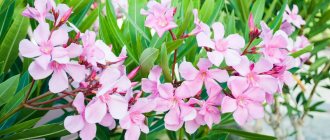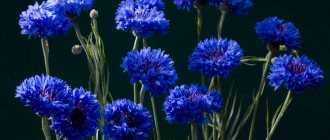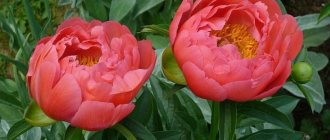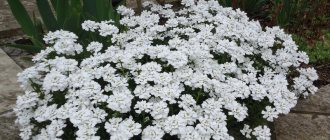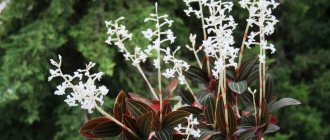Statica or limonium or kermek is an unpretentious plant that can often be seen on borders or rock gardens.
The plant gained particular popularity due to its resistance to diseases and adverse weather conditions.
Statica, planting and caring for it in open ground is very simple and accessible, creates an incredibly beautiful colored “blanket” when growing different species and varieties in groups.
The flower is not pretentious, it is modest, but at the same time very beautiful.
To grow Kermek on your site, you need to familiarize yourself with some of the features of flower care.
Photos and names of species and varieties of statice
Kermek is grown as an annual and perennial. It is a subshrub that grows up to 150 cm in height.
The leaves of limonium are elongated, straight, and collected in a rosette. Most often they are basal, and at the top the stem is practically without leaves.
During flowering, beautiful inflorescences of white, yellow, blue, purple, and pink are formed.
Depending on the type and variety of the plant, the flowers are monochromatic or multi-colored. Limonium blooms at its peak in mid-summer.
Statica is a unique plant that allows every gardener to choose the variety he likes best.
Did you know?! This beautiful flower is not only distinguished by its abundant and bright flowering and decorates areas, it also has medicinal properties. Since ancient times, dyes have been obtained from it, which were later used in dyeing carpets and leather. Kermek root contains so-called tannin. The latter is used in the leather tanning process. Traditional medicine is also well acquainted with this flower. It is used as a healing and hemostatic agent.
Gmelin statice (Limonium Gmelinii)
This species has a height of about 50 cm. It is grown as a perennial plant. Gmelina is considered one of the most cold-resistant species of limonium.
During flowering, large inflorescences of bluish-violet color are formed.
Broadleaf Kermek (Limonium latifolium)
Kermek broadleaf has purple inflorescences, its leaves are wide and green.
Very beautiful view, looks impressive when planted in groups.
Kermek perez (Limonium perezii)
The Perez species is native to the Canary Islands. It is found very rarely in our country and is considered an exotic plant.
You can recognize the species by its large inflorescences and oval leaves. Inflorescences are formed in all shades of blue and lilac.
The flower loves heat very much, so it is suitable for growing in regions with hot and long summers.
Kermek bonduelli (Limonium bonduellii)
Bondwelli grows up to 150 cm tall. This species is grown as a perennial.
Blooms white or yellow. This elegant plant is suitable for both single and group planting.
Chinese Kermek (Limonium sinensis)
Chinese kermek is grown in the central zone of our country as an annual.
This species appeared not so long ago. Plant height – 70 cm.
A distinctive feature of Chinese kermek is its small inflorescences of white or cream color.
Notched Kermek (Limonium sinuatum)
Medium-sized plant with small inflorescences.
Flowers can grow no more than 1 cm in diameter, their color can be white, lilac, blue or pink.
A huge variety of plant varieties allows you to choose one or another type to decorate any area.
When is the best time to sow seedlings?
Growing Kermek from seeds has some peculiarities, although the plant is considered quite unpretentious.
The most important thing is to accurately determine the timing of sowing.
If you decide to grow limonium in pots or boxes, then it is recommended to sow from mid-February.
When growing in a greenhouse, you can sow the seeds no earlier than mid-April.
Its optimal temperature should be around +17-22 °C.
The fact is that the plant loves heat very much, so you need to wait until the soil warms up well.
Correctly chosen sowing time affects the abundance and splendor of flowering of the subshrub.
Features of cultivation
Kermek is easy to grow in the garden, thanks to its unpretentiousness. But some features of planting statice in open ground and caring for it are important.
Preparing the soil and site for planting
New Guinea balsam - growing at home and in the garden
Statice should choose a site that is open to sunlight throughout the day, since in nature it grows in dry areas. The plant requires light soil with a high sand content. When preparing a place for planting, the soil is dug up well, drained and alkalized with bone meal.
The nuances of growing seedlings
Seeds are planted in small containers in March-April.
Important! A few weeks before transferring to open ground, the sprouts must be hardened off.
Seedlings are planted in a permanent location when the threat of frost has passed, placing the bushes at a distance of 30-50 cm from each other. Each seedling is buried using the transshipment method so as not to damage the root.
Sowing seeds in the garden
In warm regions, you can try sowing the seeds directly into open ground. This should be done when the soil warms up well enough.
Choosing soil for planting seedlings
Kermek can be sowed in previously prepared soil or purchased in a store.
The purchased soil mixture is already ready for sowing, as it contains all the necessary nutrients for the normal development and growth of the flower.
If you decide to make the soil mixture yourself, then you need to follow the following instructions:
- First, ordinary garden soil is collected from the plot.
- Next it is mixed with sand.
- The resulting substrate is sifted through a sieve. This measure is necessary in order to clear the ground of small stones, branches, and roots.
- Next, heat the soil in the oven for 2 hours at a temperature of 100°C.
- The heated soil is cooled and watered with a weak solution of potassium permanganate to disinfect it.
- After this, water it with warm water.
The soil mixture is ready for sowing, now you can begin processing the planting material.
Preparing seeds before sowing
Another important point when growing statice from seeds is proper seed preparation.
Planting material for limonium is long ribbed seeds covered with a hard shell.
This is why seeds will take a very long time to germinate if measures are not taken.
To make the planting material germinate faster, you need to rub it a little with sandpaper.
Next, the seeds are kept in damp sawdust and a preparation called Epin for 2-3 days.
Sowing statice for seedlings, selecting and preparing seeds
You can collect the landing shift yourself; this should be done in the middle of summer. The fruits must ripen well. The germination rate of such planting material will be only 30%. Whereas purchased seeds have almost 100% germination.
Due to the dense shell, the seeds take a long time to germinate. Therefore, before planting, it is better to file them with sandpaper or a manicure file. This procedure is called scarification.
After this, an epin solution is prepared (2 drops per 100 ml of water), in which the seeds are soaked for at least 4 hours. If you don’t have Epin at hand, you can place the treated planting material in a container with wet sawdust. Duration of aging – 2 days.
Soil selection and preparation
For Kermek seedlings, loose soil is best suited; you can make it yourself, be sure to add sand, or purchase a mixture for seedlings in the store. Purchased ready-made soil already contains useful substances that are necessary for the full development of the plant.
To prepare the soil yourself you need:
- Gain land.
- Mix soil with sand.
- Then clear the resulting mixture from stones and branches. To do this you need to sift the soil.
- Now the soil needs to be placed in an oven heated to 100 degrees and kept there for two hours.
- After this, the soil should be disinfected. This can be done by spilling the soil with a weak solution of potassium permanganate.
Before planting, the prepared soil must be watered with warm water.
Selection of capacity
You can plant statice in containers, peat or disposable cups, and flower pots. Before planting seeds, the dishes are also treated with a solution of potassium permanganate.
Containers must have drainage holes.
Direct sowing
Before planting the seeds, the soil should be watered with warm water. Place one seed at a time on the surface of the soil and sprinkle it with a thin layer of soil and again moisten it a little. After this, the containers with seeds are covered with glass or transparent film (thus creating a greenhouse effect) and placed on the windowsill. The soil needs to be watered regularly after planting.
If mold suddenly appears on the soil, you need to spill the soil with a solution of potassium permanganate and move the containers to a sunnier place
Favorable temperature for seedlings is 18-22 degrees, air humidity 60%. It is also recommended to warm the soil with seeds for 4 hours a day with a 60 W fluorescent lamp.
If all necessary conditions are met, the first shoots will appear 1-2 weeks after planting. If there is a lack of light, sprouts will appear a week later (after 3 weeks).
After the sprouts appear, the plant must be gradually hardened; to do this, it is necessary to remove the film or glass every day.
Rules for picking Statica
As soon as the first leaves appear on the sprouts, they can be picked. Later, you should not replant, as the tap root becomes long and can be easily damaged.
To make the procedure easy and painless for the plant, you need to make the soil as soft as possible. To do this, the seedlings must be watered two hours before picking.
A new container should be filled with soil (a 50/50 mixture of peat and sand), make a notch in the middle and carefully transfer the plant there along with the root system. If the stem of the seedling is tall enough, you can make a support from an ordinary stick.
After picking, the kermek should be placed in the sunniest area
A week after the procedure, the plant needs to be fed with complex mineral fertilizer. If the plant was immediately planted in individual pots, there is no need for picking.
Sowing seeds
Having decided on the method of cultivation, they begin to sow statice.
To do this, prepare boxes, pots, cups or any other container. The prepared soil mixture is poured into containers.
Next, lay out the seeds and sprinkle earth on top. The containers are covered with film to create a greenhouse effect.
Next they wait for the first shoots to appear. After this, you need to remove the film and place the containers in a sunny place.
Conditions for seed germination
Statice seeds do not germinate very quickly. The fastest time is 10 days.
In some cases, the first shoots appear only after 21 days.
Such a long germination period is explained by the fact that all the necessary conditions were not created.
For the seeds to germinate, you need:
- ensure the room temperature is about +20-24°C;
- water correctly so that the soil is constantly moist;
- warm the containers with a 60 W fluorescent lamp (daily for 4-5 hours).
If everything is done correctly, you will soon be able to observe the appearance of the first shoots.
As soon as 2-3 true leaves form on them, you can start picking.
Picking seedlings
This stage of growing limonium is controversial. Some gardeners claim that it is simply necessary, while others, on the contrary, do not recommend picking seedlings.
In any case, if the seeds germinate very often, they need to be planted.
This is due to the fact that as the seedlings grow, they will not have enough sunlight and space.
The roots will begin to intertwine with each other, then it will be difficult to transplant them to a permanent place in open ground.
Picking Kermek seedlings:
- It is recommended to water the containers with seedlings generously a couple of hours before the procedure. This will help soften the soil and make it looser and more pliable. This will make it easier to remove the plants without damaging the fragile root system.
- Prepare cups, pots or other containers and fill them with soil.
- Carefully remove the seedlings and place them in new containers.
- Next, they are watered and put in a sunny place.
The last point is especially important after picking plants, since they really need light.
If the seedlings do not have enough of it, they will begin to stretch out and become pale and frail. This also needs to be taken into account when transplanting to a permanent place.
Lack of light can cause statice to stop blooming.
Frequently asked questions when growing Statica
How to feed Statica?
If the plant is planted in good, rich soil, then fertilizing is not necessary. If the soil in which Kermok grows is poor, then it should be watered with mineral fertilizers. This should be done 1.5 weeks after planting the seedlings in open ground. This feeding can be repeated every 3 weeks. At the beginning of autumn, there is no need to feed the plant.
Mineral fertilizers
Why don't the seeds grow?
The main reason is the expiration date of the seeds. Always check the release date before purchasing. If seeds collected independently do not germinate well, it means that the storage conditions were violated. Also, seeds that were collected before ripening will not germinate.
How to harden seedlings?
It is necessary to remove the film or glass so that the seedlings get used to the air. Then you should take the plants outside every day, gradually increasing the time the seedlings spend in the fresh air. Such procedures make it easier for seedlings to survive planting in open ground.
If the plant has spent the whole day outside and its appearance has not changed, then it is ready to be planted in a flowerbed.
Why don't the seedlings grow?
You need to carefully examine the plants; perhaps rot or spots have appeared on the leaves. Or the ends began to dry out and curl. These are all signs of disease. You can save seedlings with preparations that contain copper.
By following the recommendations given in this article, even novice gardeners can grow Statica seedlings. This unpretentious beautiful plant will decorate your summer cottage or vegetable garden.
Statice has also been used in folk medicine; it is used as a hemostatic agent.
Planting seedlings in open ground
When transplanting statice into open ground, you need to take into account the composition of the soil and the illumination of the area.
It is also important to choose the right time so that the heat-loving plant is not damaged by frost.
When to transplant seedlings
The timing of transplanting kermek to a permanent place differs. They depend on the climatic characteristics of the region of the country.
The optimal temperature for growing statice is +22-27°C.
Although the plant is considered unpretentious, it can freeze at a temperature of -5°C.
Thus, transplanting into open ground occurs around the end of May, but it is better to leave the plant at home until June.
Choosing a place to grow
You need to choose a place that is well lit with predominance of sunlight throughout the day.
Flowering will be longer and more abundant in hot sunny weather.
It is also important that the area is protected from the wind.
How to properly plant seedlings on the site
When transplanting seedlings to a permanent place, the main thing is not to damage its roots.
That is why the holes for seedlings need to be prepared the same size as the containers in which the seedlings were grown.
The seedlings must be carefully removed from the containers and, together with a lump of earth, placed in holes in a new place.
You need to act very carefully, this will allow the plants to quickly adapt to the new place.
After the seedlings are transplanted, they need to be watered with salt water. For this, 1 tbsp. l. salts are diluted in 10 liters of warm water.
Another important point when replanting is the correct distance between individual plants.
If you plant seedlings too close to each other, this can affect the size of the inflorescences, they will become smaller.
Thus, the optimal distance between plants is more than 25-30 cm.
When to sow statice for seedlings in 2020 according to the lunar calendar
In order for statice to grow beautiful and strong, it is necessary to plant it on days charged with the positive energy of the Moon. Therefore, you can refer to the lunar calendar, which indicates favorable and unfavorable days for planting seedlings.
Favorable days for planting
| Month | Favorable days for yearlings | Favorable days for perennials |
| January | 1,7,8, 9, 11, 14 -21, 21, 27-29 | 1,5,6,16-19,22, 23, 27-29 |
| February | 4-7,10-15, 25 | 1-3, 14, 15, 19, 20, 28, 29 |
| March | 2-6,10, 13, 14, 22, 27, 28 | 1,13, 14, 17, 18, 22, 27, 28 |
| April | 2-6, 15-17, 20, 26, 26 | 4-6, 8-12, 15-17, 20 |
| May | 2-6,15-17, 25, 26, 30, 31 | 4-6, 8-12, 15-17, 20 |
Unfavorable days (full moon and new moon days)
| Month | Days |
| January | 10,24-26 |
| February | 9,22-24 |
| March | 9,23, 24, 25 |
| April | 8,22, 23, 24 |
| May | 7,21, 22, 23 |
Caring for statice on the site
Many gardeners know that statice flowers are very unpretentious. They can grow even in poor soils and with minimal care.
However, by providing it with proper attention, you will get a very beautiful and profusely flowering plant.
How often to water
The plant can tolerate drought well. It practically does not require constant watering.
The flower should be watered only in very hot weather, approximately once every 40-45 days.
You only need to use warm, settled water, as the flower loves warmth very much.
Water only at the root so that moisture does not fall on the plant itself.
Be sure to water it with salt and water once every time. After watering, it is better to loosen the soil so that oxygen can better penetrate to the roots.
How often and with what to fertilize
It is not necessary to feed limonium; it grows and blooms well without fertilizing.
If the soil on the site is too poor, then you can take care of the plant and feed it with mineral supplements.
You need to fertilize 10 days after planting the seedlings in a permanent place. Then you can apply fertilizer every 3-5 weeks.
If the soil is fertile, then fertilizing statice is not needed at all.
After flowering
After flowering, garden flowers begin to fade and turn yellow. Before frost sets in, they need to be cut right next to the soil.
Cover with straw, leaves or twigs, and put covering material on top. To prevent the material from being blown away by the wind, it needs to be weighed down with something.
You can use stones and sticks. Cut flowers can be placed in a vase at home. This dried flower looks great and lasts a long time.
Pests and diseases of Statica
Kermek is one of the most resistant plants and very rarely gets sick, and it is also not afraid of pests. But, still, let’s look at the main diseases that can affect static.
During the season of frequent rains or improper watering, the flower may suffer from a disease called botrytis. In this case, the plant should be treated with fungicides.
Another disease that can affect statice is oidium. Treatment consists of the use of sulfur-containing drugs
There is another attack that can destroy flowers - aphids. The main thing is to notice it in time. To save the plant, you need to prepare a special solution based on alcohol and soap and spray the affected areas with it.
